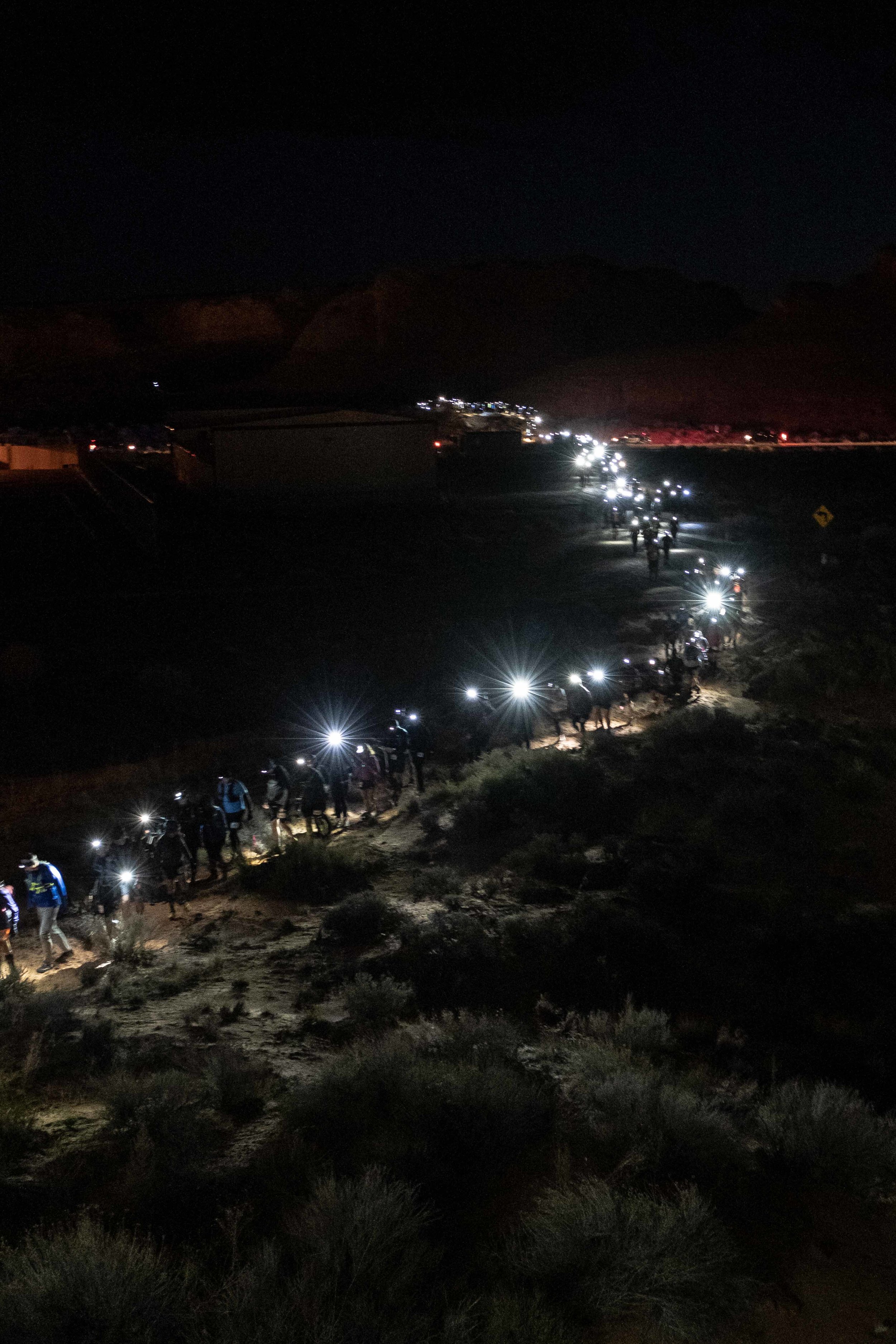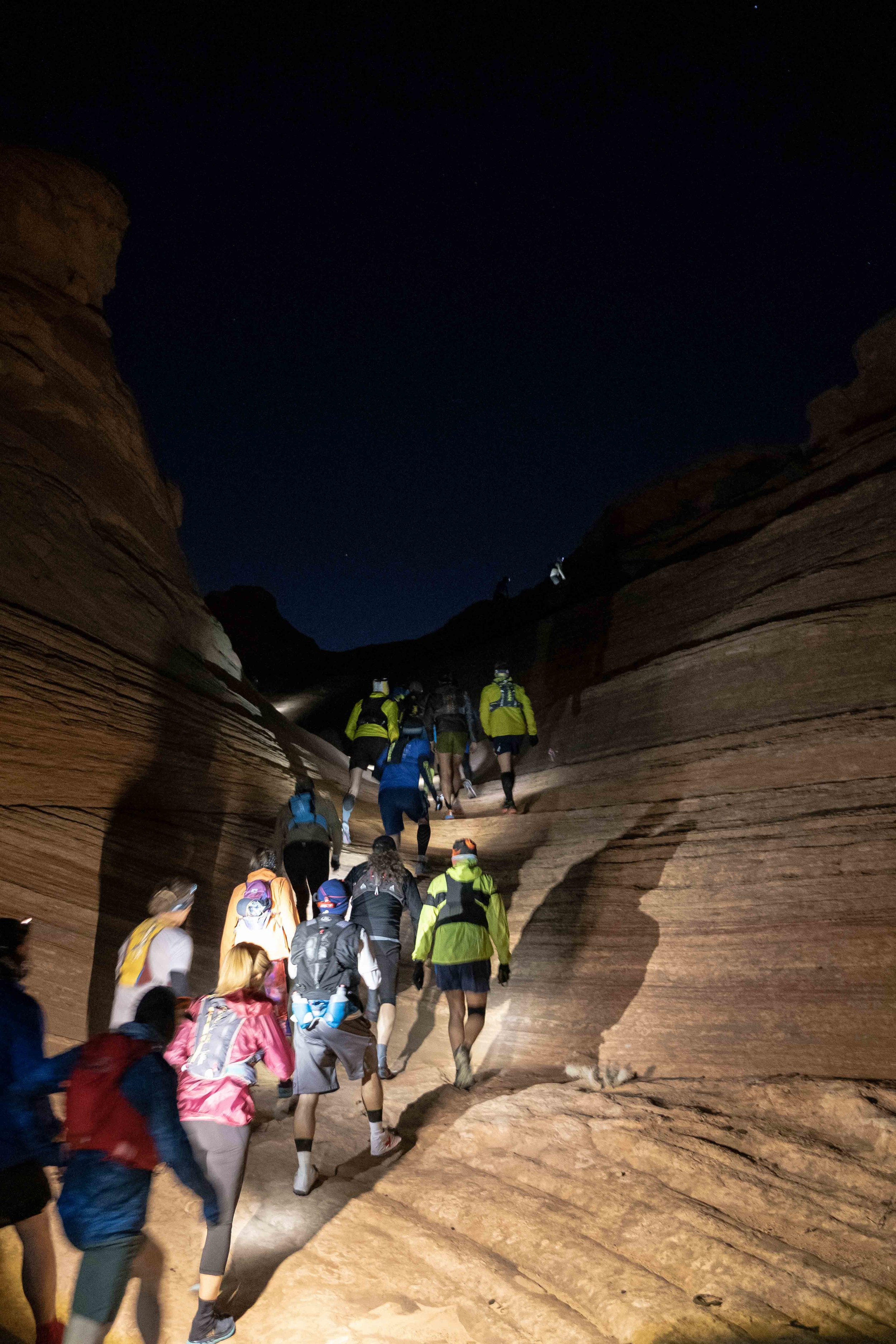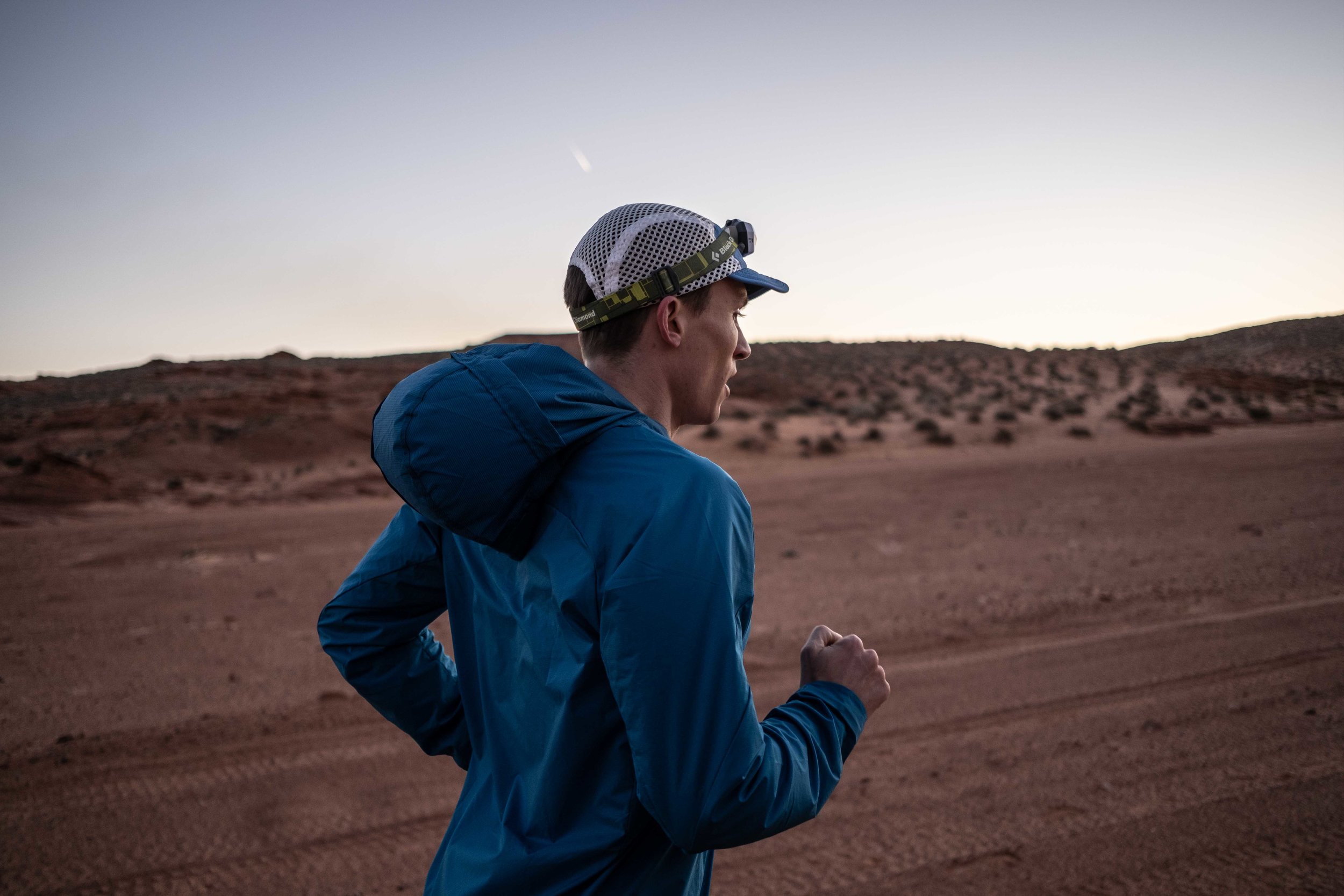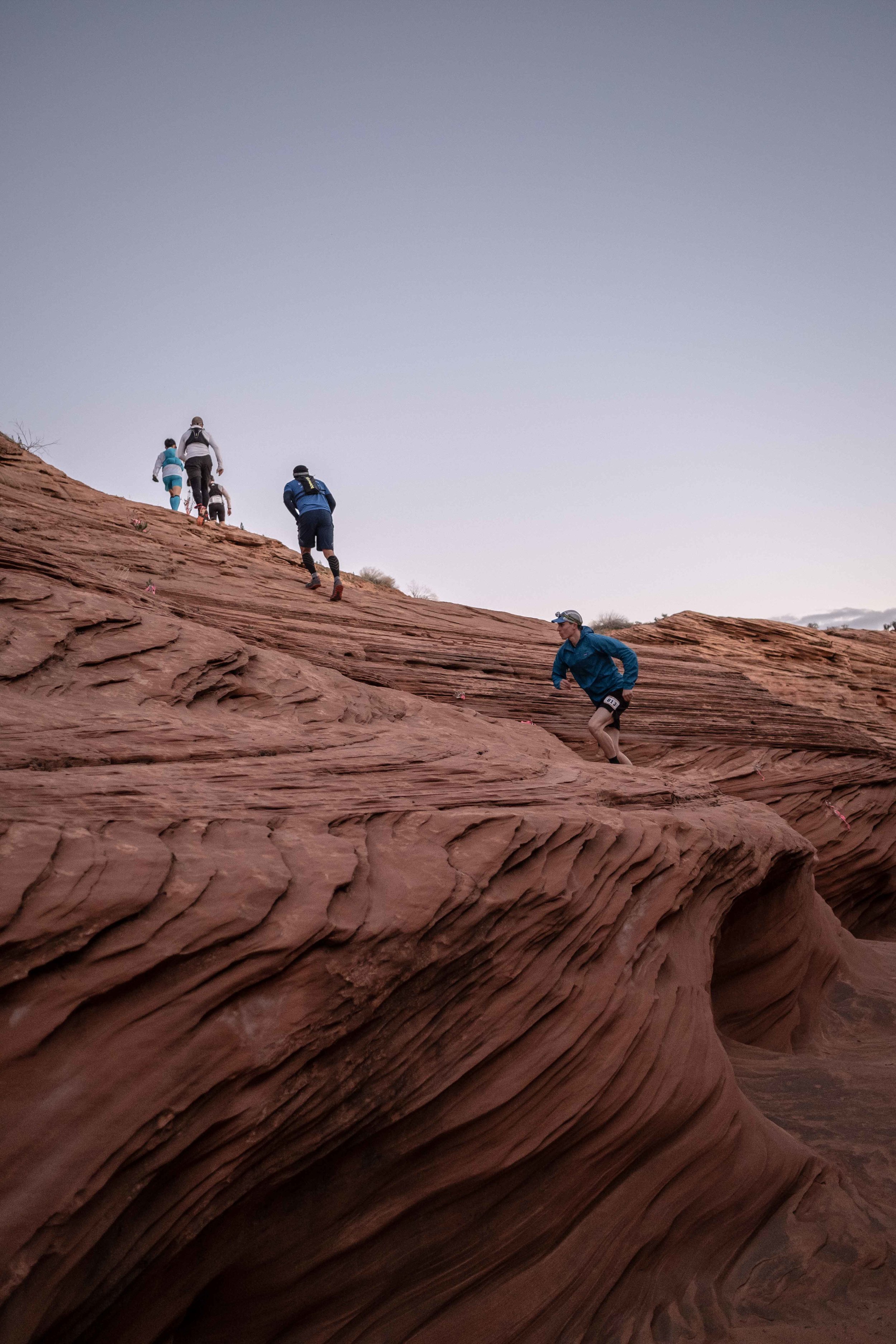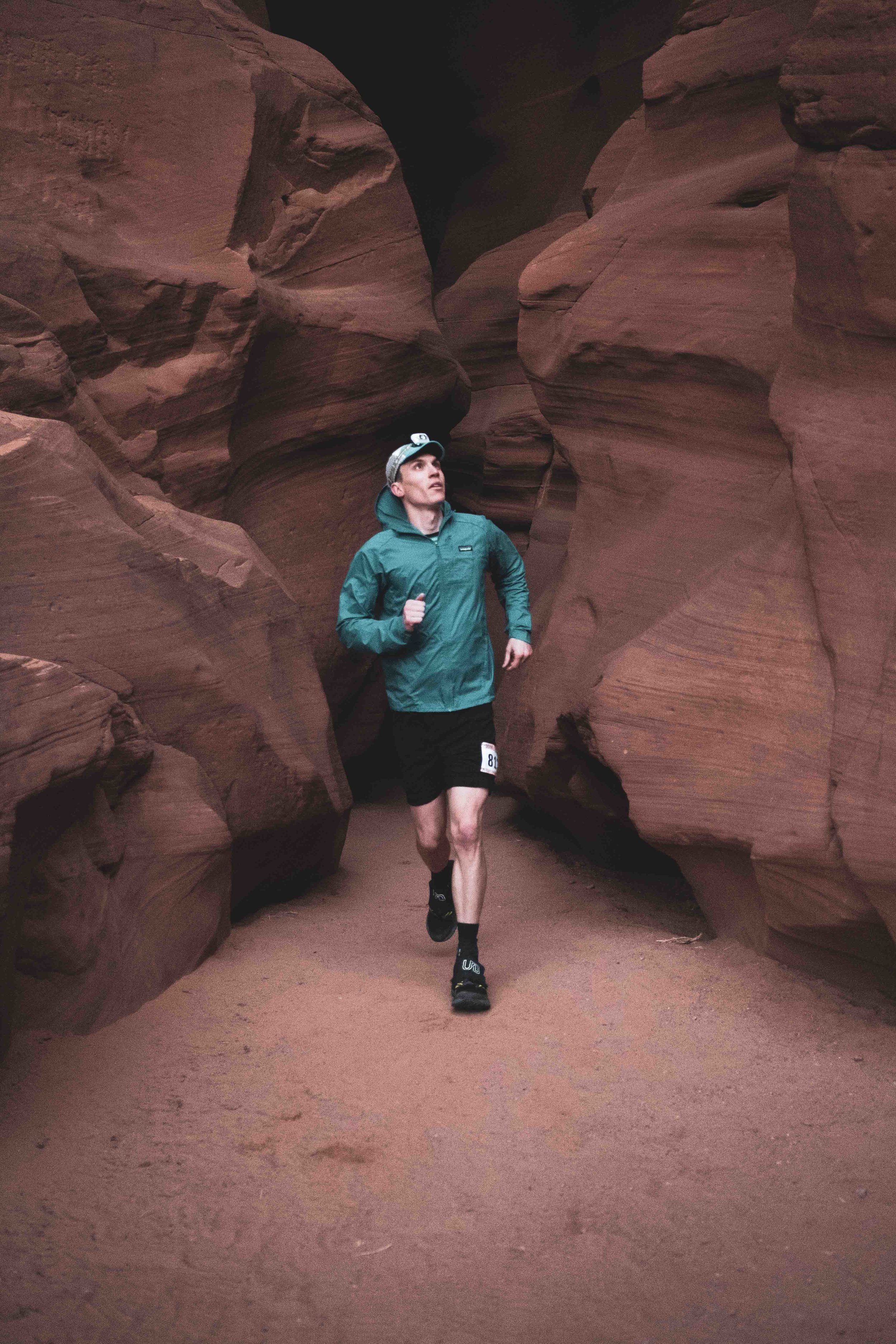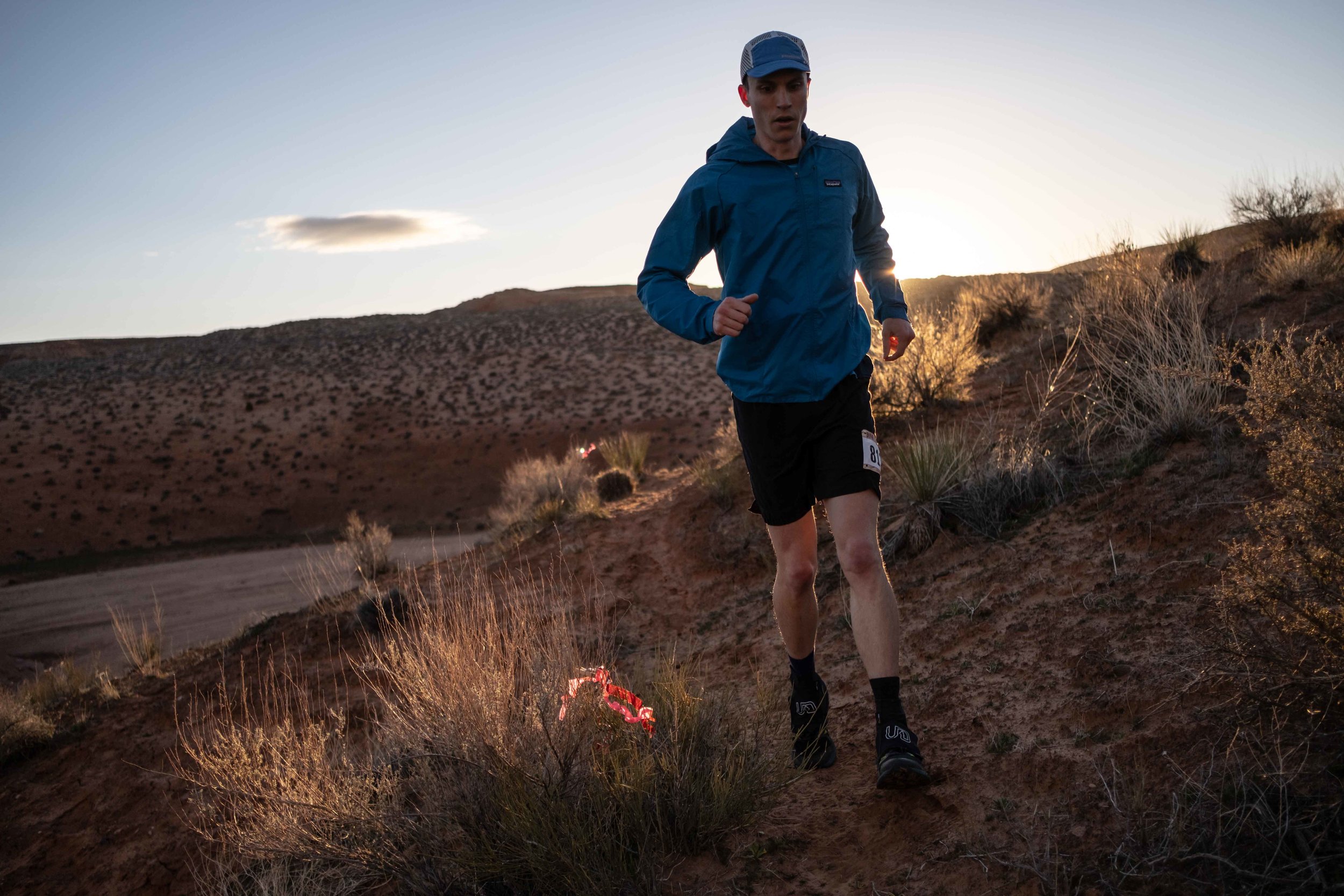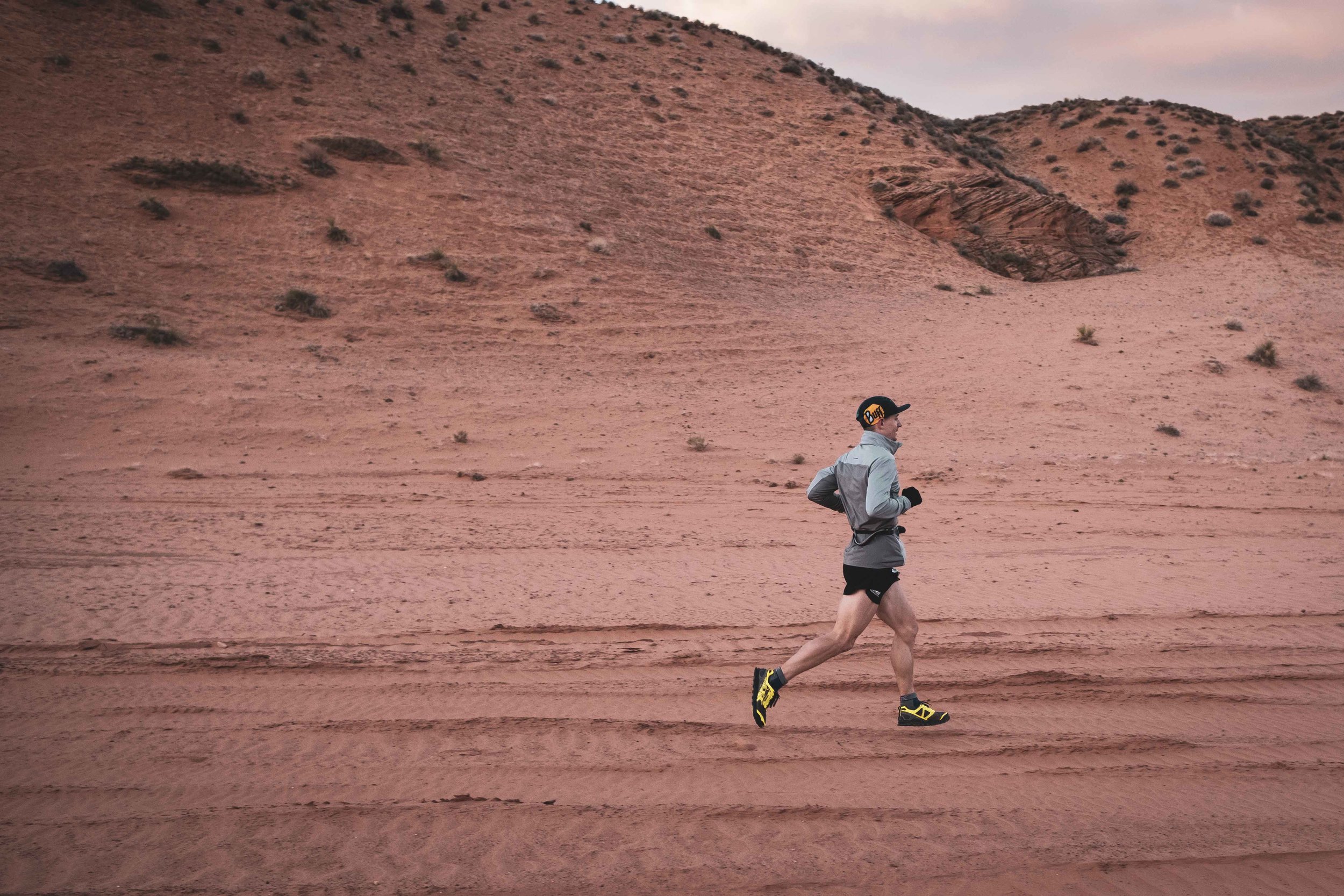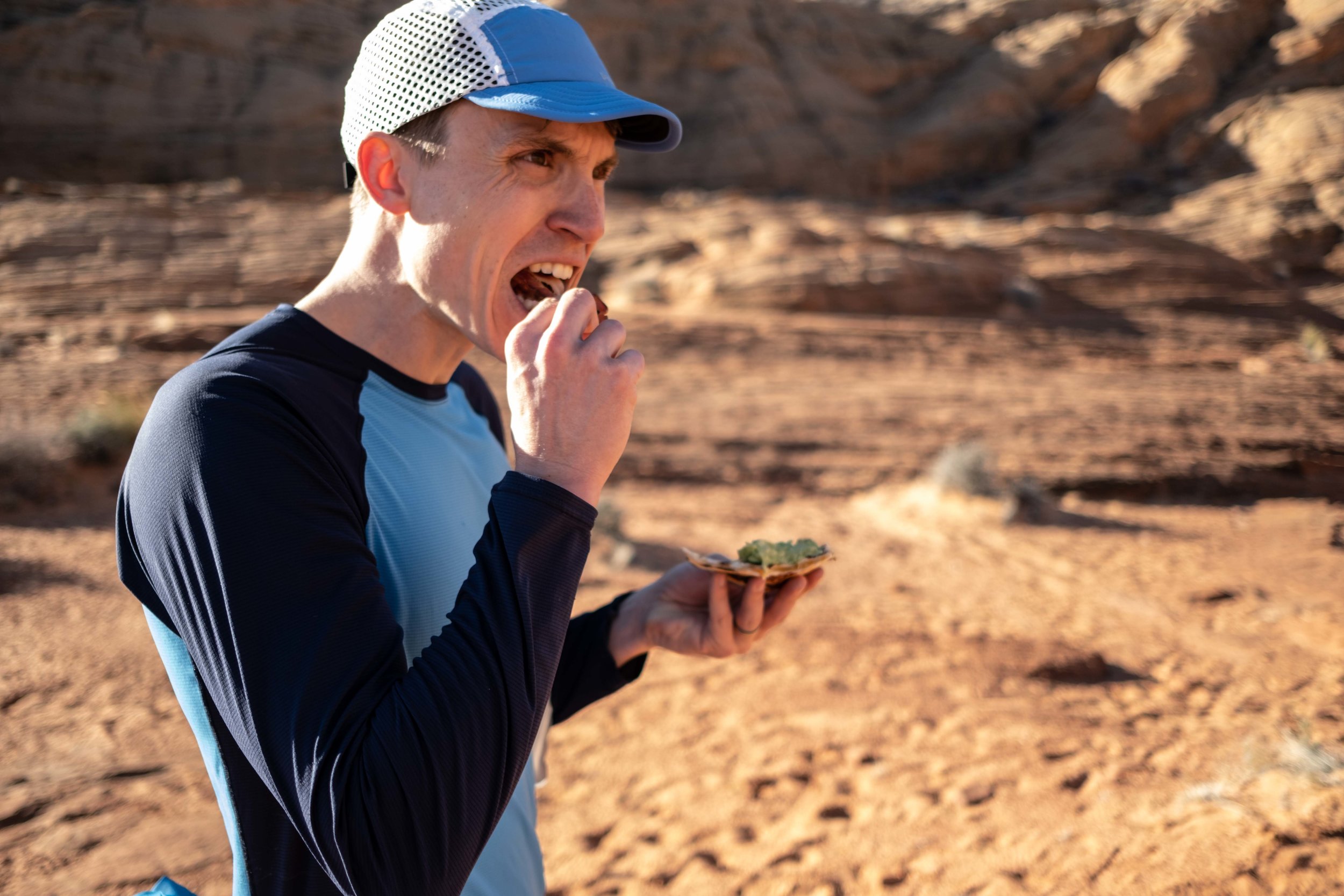I’ll take just about any excuse to embark on a road trip through the American Southwest. I get excited planning where I will sleep in the back of my Santa Fe, waking up to instant coffee with the warm, Arizona sun seeping through the brisk desert air, not to mention the new rock formations to explore through a viewfinder while wandering over textured slickrock. So when a stranger’s post on a local trail running Facebook page scrolled into view offering a bib to a sold out race I barely hesitated. However, the pressing issue was the upcoming race date only allowed for one or two good training blocks and a consolidated taper (which, for an early season race like this, inevitably involves a bunch of ski-touring instead of running. Time on feet, right?).
Sunset before race day on the Antelope 50 course.
Flash forward two months, one over-ambitious 75 mile week, and 15 hours of driving later and I’ve found myself at the starting line of the Antelope Canyon 50 Miler in Page, Arizona. This isn’t my first 50 mile race (nor is it my first less-than-prepared ultra) but there’s something different about this one. A quick glance down at my hydration vest reveals a camera, specifically a Fujifuilm X-T3, awkwardly rigged between straps, around my neck, and stuffed into the left side flask pocket. Being a mirrorless camera body, it’s a bit smaller than your standard DSLR but still bulky enough to make a fellow racer scoff at the awkwardly perched camera remarking, “I can’t believe you’re running with that”.
Ben entering a cloud of pre-race exhales from fellow runners.
Let me provide a touch of context to this decision:
I’m a photographer and a trail runner, and I often advertise myself as being a ‘trail-running photographer’. Many folks understand this mostly entails either A. Taking photos of trail runners, or B. Running on trails and periodically stopping to take photos.
However, there are a select few that think this means I run ultra-distances, camera in hand, snapping photos all the while trying to beat cutoffs and work my way up the finisher rankings. So, to fulfill this self-given title and to make me feel better about what I was assuming would be a sub-optimal performance, I thought “why not race with my camera?”
After a pre-race briefing and a Navajo blessing, the clock started. Shuffling through the cold sand across the crowded starting line, I haphazardly snapped away mostly blind to the images appearing on my camera’s display, trying to edge my way through the presumably mid-pack group and occasionally spinning around to grab an image of blurry legs and bright headlamps.
I spent the front 20 miles of the race with fellow Washingtonian photographer, Ben Groenhout, a first time utrarunner but no stranger to endurance events. Ben and I occupied the morning miles trading stories of glaciers and bikes, proclaiming this year’s summer goals, eager for mountain running season to come back to the Northwest. Being my first time trying to shoot and run a race, I tried formulating focuses for my images; perhaps portraits of volunteers, a collection of individual runners in the vast desert scenery, or maybe just a photo of my legs for every mile (thankfully didn’t follow up on that one). I decided to wing it and see what would feel the most natural, and that quickly became Ben. Folks who have ran an ultra will often talk about a person they met, an unexpected partner through the undulating miles that they developed a connection with through the cycles of pain and gratitude. Reflecting on my past races, this is one of the most fundamental attractions to these events and thus, the most natural subject.
As we wandered over slickrock under the starry morning sky, the far off gradient of sunrise approached, illuminating the distant canyons we were to run through. The more people we passed, the more suprised comments I collected, inquiring what I was doing with that unwieldy camera around my neck.
I’d been to a few slot canyons in the area on prior Utah trips, however never this early in the morning. Most folks that visit Antelope are hoping for the glowing red and orange sandstone walls that flood their Instagram feeds, however you only get this effect from the midday, overhead sun. Nonetheless, I found navigating the muted walls by headlamp an entertaining alternative as we were constantly ducking around rock triangles seemingly marching towards us.
Sun broke over the canyon and I watched the lead runner pass us on an out and back, a few miles ahead, meanwhile contemplating how the effects of 30 miles of soft sand would manifest in my legs. Soon we had arrived back at the first aid station, retracing our steps away from the namesake canyon of the race and back towards the town of Page.
Ben exiting Upper Antelope Canyon. The canyon resides on Navajo land and being granted access to run through it is one of the biggest appeals of the race.
Propelled by quesadillas and Swedish Fish, we began to close in on the 20 mile mark as we traversed the other-worldly terrain the desert is so well known for. The hard, unforgiving sandstone started to make me thankful for the sand I had become so familiar with over the past few hours (neither of which was as kind to my legs as the soft forest floors of Washington).
Waiting at the 20 mile aid station were Ben’s wife and kids. Sporting hand-drawn signs and bright, cheesy grins, the two kids excitedly embraced their dad, hollering words of encouragement.
I’m not going to go into detail about the following 30 miles for two reasons - first, they were rather painful, and second, I decided at this time I would toss my camera in the back of my vest and buckle down. I knew Ben and I had worked our way into the top 20, so thoughts of a sub-10 hour finish made me think I should take the remaining miles a little more seriously.
My under-prepared legs did have their breaking point though, and as I entered the final 10 miles (which were supposed to be super fast single-track) my hamstrings were hit with off and on cramps, gripping my legs as if they knew I had scoffed at a training plan upon signing up in what was supposed to be week 12 of a progressive training block. Or perhaps my now-personified rogue muscles felt it was their duty to enforce a strict bonk-policy to people who try to bullshit their way through an ultramarathon. Regardless, I stumbled my way to 13th and a 9:27 hour finish. Technically a PR, but my other 50 miler involved climbing a heavily glaciated volcano, so perhaps not the best comparison. I guess that’s why we’re running on trails, sand and snow instead of roads.
(Someone please convince Brooks to un-discontinue the Mazama)
My tendency to sign up for races on a whim is admittedly not the smartest race strategy, however, I do credit it for my decision to treat this event as a visual-journalism endeavor. Removing the pressure to perform well led to pursuing a new challenge of documenting the race experience, from the perspective of the racer.
This feels like the resurfacing of my roots. Back when I would introduce myself as a visual journalist (insert resentful comment about the state of the journalism industry), I was always searching for personal projects that might be worthy of a photo story. I came up with the equation: whatever uniquely fits your skill set + what is obscurely interesting to the public = a worthy photo story. I can’t say for certain that running 50 miles in the desert is overly interesting to the majority of people, in fact it probably sounds rather dull at first glance, but I do think that perhaps there is some outsider intrigue into the general ultra experience. Maybe more importantly, after running a race, I tend to hold on to quiet moments of struggle or triumph or beauty - a small section on the Chuckanut Ridge trail that in a state of delirium felt like a bouldering problem, a friendly volunteering bearing a bacon and brie waffle on a forest road at 3am, or the moment I looked over my shoulder at Ben taking down a handful of quesadilla while descending into the shadows of a small gulch. Moments not always caught on the cameras of race photographers or on the cell phones of crew members; moments exclusively experienced as a racer. Ones that are a little challenging to put into words, but flood back into memory when asked “How’d that run thing go?!” by a coworker the following week. I’m not sure that I’ve successfully encapsulated those moments in the frames above, there are so many moments I’ve missed, but I kind of don’t care either way. What I do care about is the discovery of this purpose through the act of doing. In other words, I went in to this endeavor blind to my focus and, through running and shooting whatever was in front of me, discovered the direction: the collection of moments experienced as a runner.





